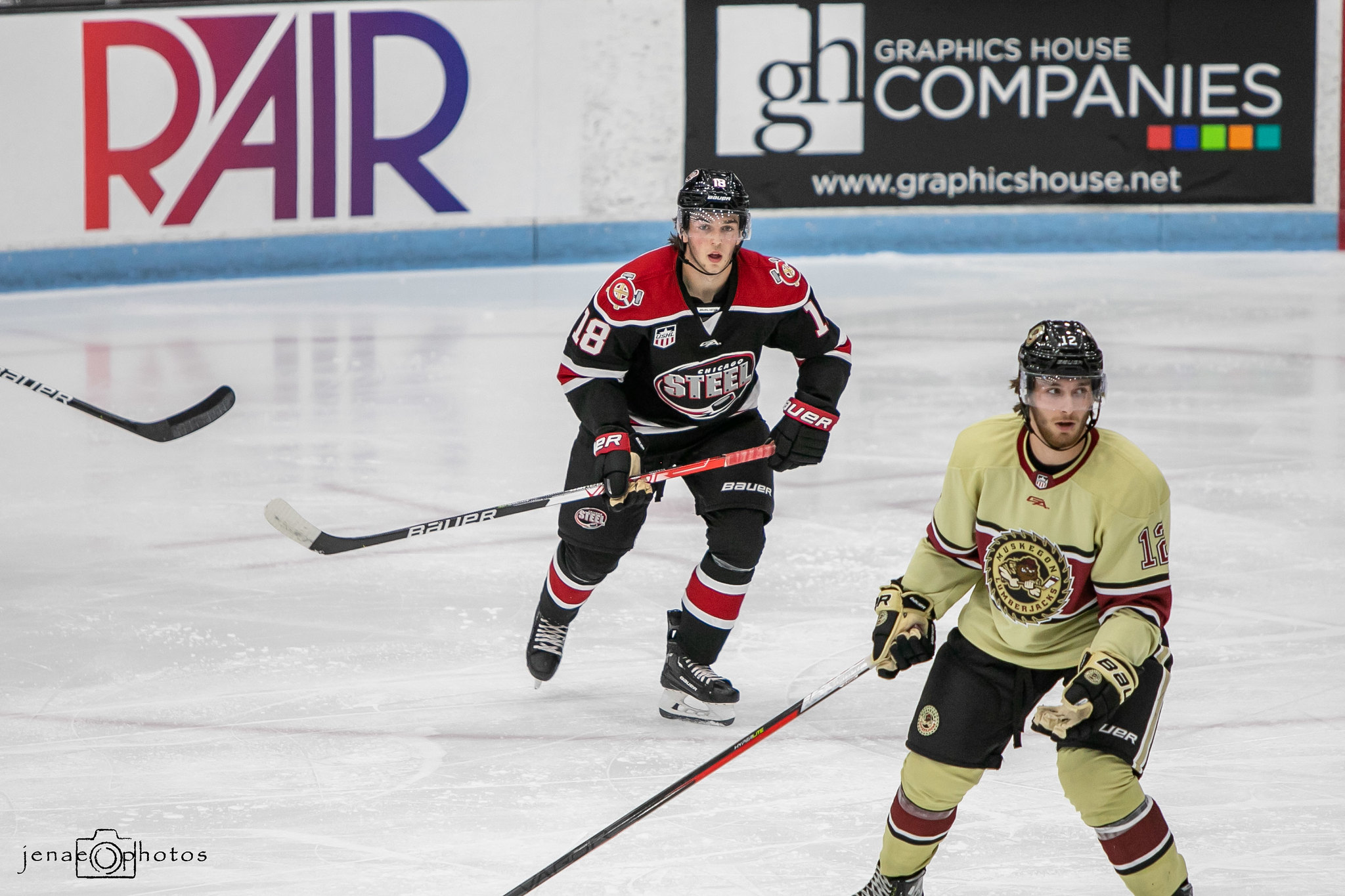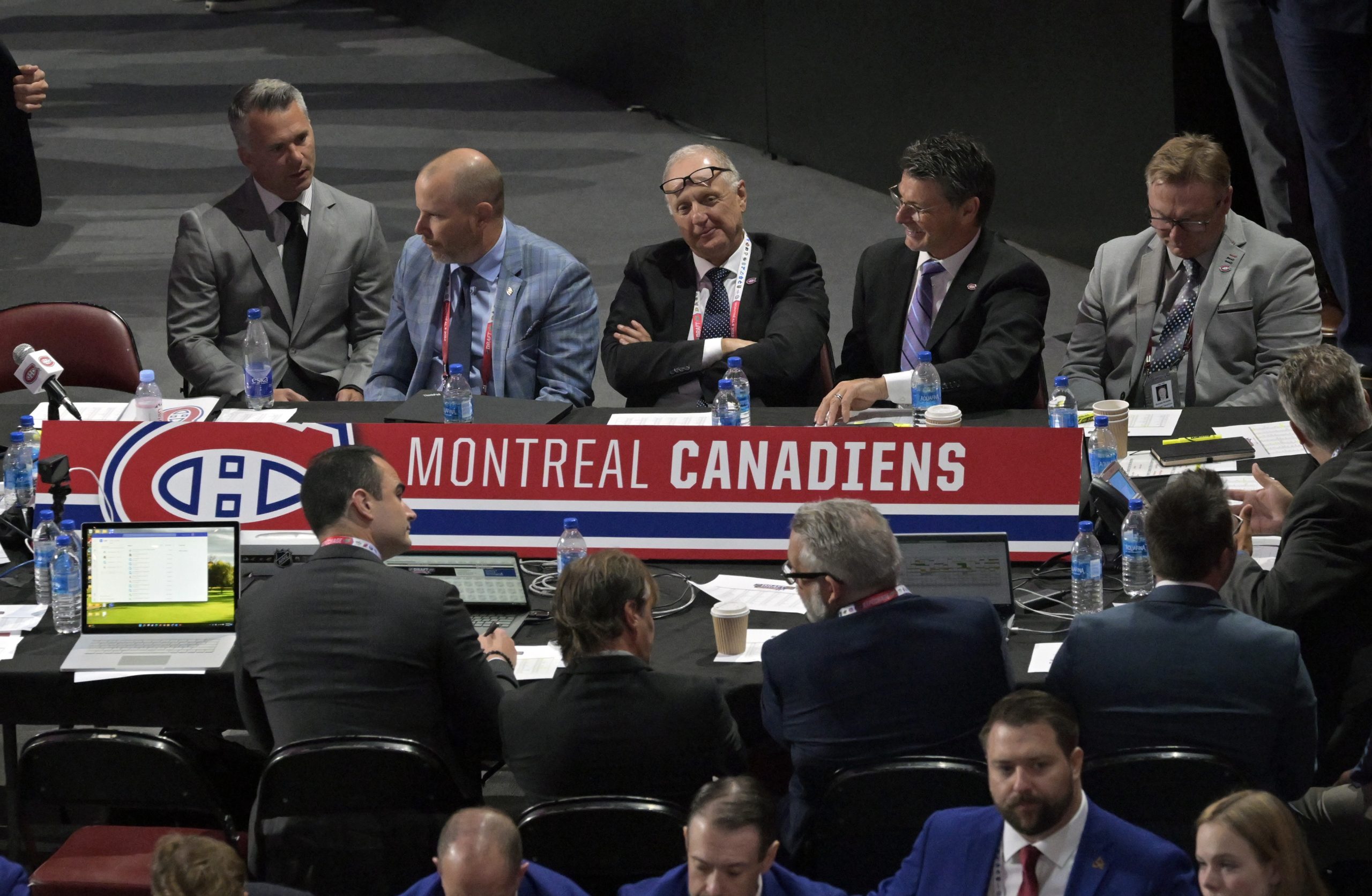Meanwhile, Elite Prospects lead scout and resident Hockey Man

David St-Louis greeted that enthusiasm for Perron with a great deal of skepticism, admiring the skill level but questioning the translatability of his profile to the NHL. Everyone else fell somewhere between the two extremes, and we reached a compromise in that space when it was time to place Perron on our board. The selling points of Perron’s game are obvious, immediately apparent after one viewing. He’s an exceptionally intelligent playmaker, anticipating plays one, sometimes two steps ahead of everyone else on the ice, setting up each pass with eye-level and body deception, and weighting each pass perfectly to set his linemates up to finish the play. You won’t necessarily see the Steel winger bulldozing his away through opponents or burying the shoulder, but his handling skill allows him to play keepaway, pairing nicely with his patience as a distributor to let plays develop and strike at just the right moment. Those hands also make for a nice finishing tool. There aren’t many Frank J. Selke Trophies in Perron’s future, but he tracks well, backchecks hard, and makes intelligent reads in the defensive zone. He’s a 200-foot player, even if a quick look at his Elite Prospects player page wouldn’t give you that impression. The knocks on Perron are that the skating doesn’t match the puck skills and he’s not the most efficient distributor, playing more of a volume game than picking his spots and striking with that killer instinct. And standing at just 5-foot-8 without separation speed, it’s fair to wonder how well his game will scale up to the next level, despite relatively sound puck protection mechanics. Still, skill almost always wins out, and Perron brings it in spades. There’s a bit of a boom-or-bust dynamic at play here, but if everything breaks right, you’re looking at a top-six, playmaking winger who can contribute on a first-unit power play.




 David St-Louis greeted that enthusiasm for Perron with a great deal of skepticism, admiring the skill level but questioning the translatability of his profile to the NHL. Everyone else fell somewhere between the two extremes, and we reached a compromise in that space when it was time to place Perron on our board. The selling points of Perron’s game are obvious, immediately apparent after one viewing. He’s an exceptionally intelligent playmaker, anticipating plays one, sometimes two steps ahead of everyone else on the ice, setting up each pass with eye-level and body deception, and weighting each pass perfectly to set his linemates up to finish the play. You won’t necessarily see the Steel winger bulldozing his away through opponents or burying the shoulder, but his handling skill allows him to play keepaway, pairing nicely with his patience as a distributor to let plays develop and strike at just the right moment. Those hands also make for a nice finishing tool. There aren’t many Frank J. Selke Trophies in Perron’s future, but he tracks well, backchecks hard, and makes intelligent reads in the defensive zone. He’s a 200-foot player, even if a quick look at his Elite Prospects player page wouldn’t give you that impression. The knocks on Perron are that the skating doesn’t match the puck skills and he’s not the most efficient distributor, playing more of a volume game than picking his spots and striking with that killer instinct. And standing at just 5-foot-8 without separation speed, it’s fair to wonder how well his game will scale up to the next level, despite relatively sound puck protection mechanics. Still, skill almost always wins out, and Perron brings it in spades. There’s a bit of a boom-or-bust dynamic at play here, but if everything breaks right, you’re looking at a top-six, playmaking winger who can contribute on a first-unit power play.
David St-Louis greeted that enthusiasm for Perron with a great deal of skepticism, admiring the skill level but questioning the translatability of his profile to the NHL. Everyone else fell somewhere between the two extremes, and we reached a compromise in that space when it was time to place Perron on our board. The selling points of Perron’s game are obvious, immediately apparent after one viewing. He’s an exceptionally intelligent playmaker, anticipating plays one, sometimes two steps ahead of everyone else on the ice, setting up each pass with eye-level and body deception, and weighting each pass perfectly to set his linemates up to finish the play. You won’t necessarily see the Steel winger bulldozing his away through opponents or burying the shoulder, but his handling skill allows him to play keepaway, pairing nicely with his patience as a distributor to let plays develop and strike at just the right moment. Those hands also make for a nice finishing tool. There aren’t many Frank J. Selke Trophies in Perron’s future, but he tracks well, backchecks hard, and makes intelligent reads in the defensive zone. He’s a 200-foot player, even if a quick look at his Elite Prospects player page wouldn’t give you that impression. The knocks on Perron are that the skating doesn’t match the puck skills and he’s not the most efficient distributor, playing more of a volume game than picking his spots and striking with that killer instinct. And standing at just 5-foot-8 without separation speed, it’s fair to wonder how well his game will scale up to the next level, despite relatively sound puck protection mechanics. Still, skill almost always wins out, and Perron brings it in spades. There’s a bit of a boom-or-bust dynamic at play here, but if everything breaks right, you’re looking at a top-six, playmaking winger who can contribute on a first-unit power play.
